M easuring brand awareness is one of the most difficult metrics to evaluate. It requires skills and the right tools to get started.
Brand awareness includes both brand recall and brand recognition. Whereas the former refers to the case when people instantly remember your brand (the name of your brand), the latter tells how a person can identify a brand from the others.
Brand awareness shows how well a customer knows your product and asks for it. Brand awareness affects the consumer's buying decision process. When a client is needed to tell a brand apart from others and make a decision based on the available variants, brand awareness comes into action and helps the customer lean towards a decision (I want that one - with the peachy packaging).
But, just like everything in online marketing, how do we measure brand awareness? In order to align the results with the marketing goals, how do you tie your metrics with the goals to help you pull out some decisions and plan your future marketing strategy?
Fortunately, in this blog post you'll find top 7 ways to measure brand awareness and track its effectiveness.
- Monitor Direct Traffic
- Observe Referral Traffic
- Track Volume of Brand Mentions
- Evaluate the Sentiment Analysis for Your Mentions
- Quantify the Total Number of Followers on Social Media
- Check Social Engagement
- Determine Social Media Reach
1. Monitor Direct Traffic
On the way of measuring brand awareness, the first step and one of the easiest is to track direct traffic for your website. Direct traffic is when a user types your website URL into the address bar. Your visitors come directly, without navigating from other websites. So, if the user is able to identify your brand and remembers the URL then direct traffic is the one way to measure brand awareness.
Some other form of direct traffic can be found on bookmarks or links from documents that don’t include tracking variables (such as PDFs or Word documents).
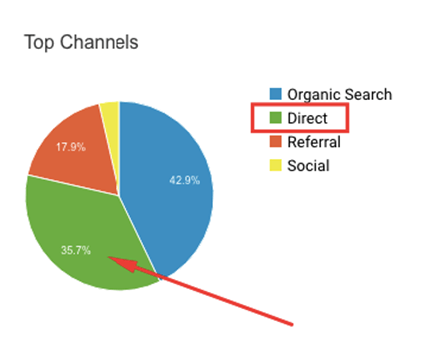
To monitor your direct traffic you can use specific tools for website analytics, where you have all the information structured and you can pull out some great insights.
Google Analytics, one of the most popular platforms for that, is able to analyze and organize your website traffic.
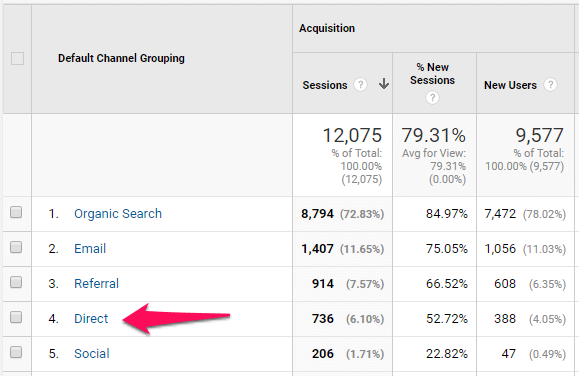
Following the website traffic over time gives you insights on whether the brand awareness campaigns have any success. Besides the direct traffic, you have data on social traffic. Following that data, you can see whether the Public Relations and social media efforts are bringing results.
For example, you can see spikes for the time you had any PR events or media announcements. All of them will have a direct impact on your overall traffic, and it can complement your organic traffic over time.
2. Observe Referral Traffic
The second metric for measuring your brand online is referral traffic, which refers to visitors coming from direct links on other sites. When a visitor is provided a link to your website from an external page and they access it, they are directed to your website. That visitor will be counted as referral traffic in Google Analytics, and any other similar website, such as Statcounter.
When people are searching for the exact URL online, that means they really know your brand and website; they are able to memorate it.
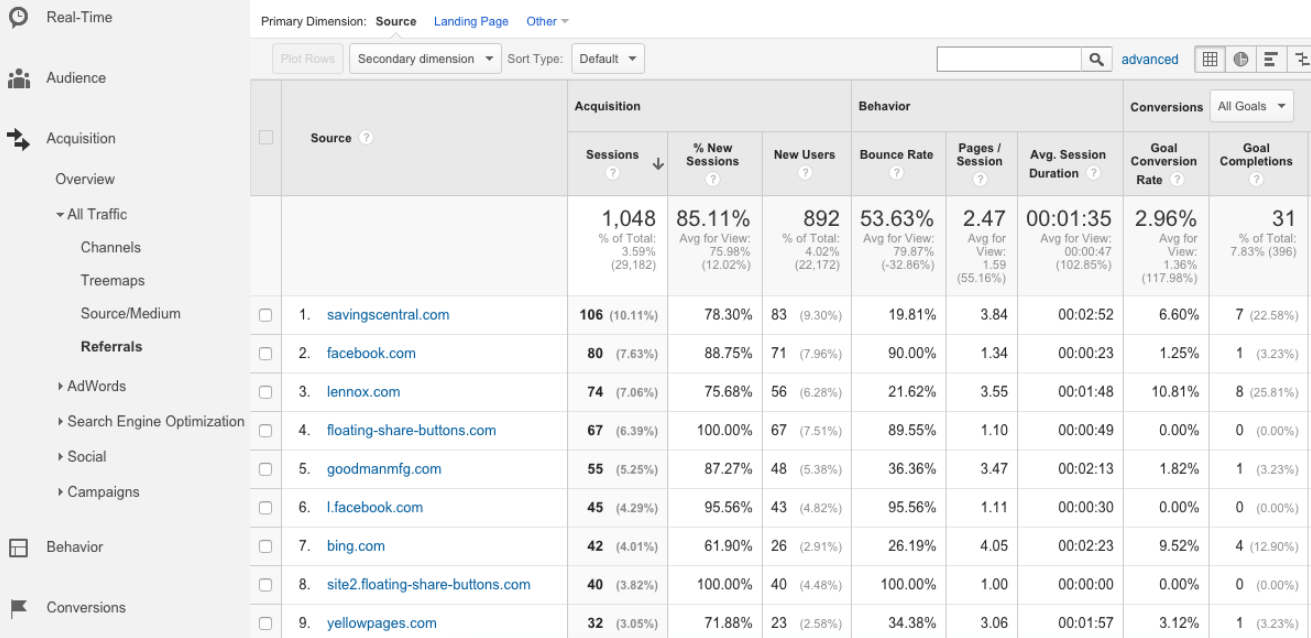
To better understand your referral traffic look also at the Avg. Session Duration and Pages/Session. Here you can see how much time users are spending on the site and how many pages they visit.
Compare social traffic with referral traffic to understand what works best. Is your social media strategy, where you spend hours of attention, better than, for example, a local directory listing on a third-party website?
Building brand awareness through social media can be one of the most viable options, and for sure it is implemented by lots of business. Keeping an eye on the data will show if it's worth the effort.
3. Track Volume of Brand Mentions
Mentions are hints that people talk about you, not necessarily to you. If you don't have a generic name, it might be easier to track your brand name. But even so, BrandMentions has lots of filters and accuracy algorithms that manage to show only relevant mentions. Social listening will come to the rescue in this situation and allow you to refine your search.

Depending on how many mentions you have, that's how good your brand recall is. More people talking means more popularity. But it also depends on the tone of voice and whether the feedback is positive or negative. For that, we'll need to look at the sentiment analysis, another metric for measuring brand, which we'll discuss in the following step.
BrandMentions collects the volume of mentions into two categories: web and social, to help you pull out results more easily. You can keep track of your media mentions, fans' social mentions, or mentions generated from relationships built with reporters, joint activities with other companies and so on. Here you can track earned media, which is free and an important way to measure brand awareness.
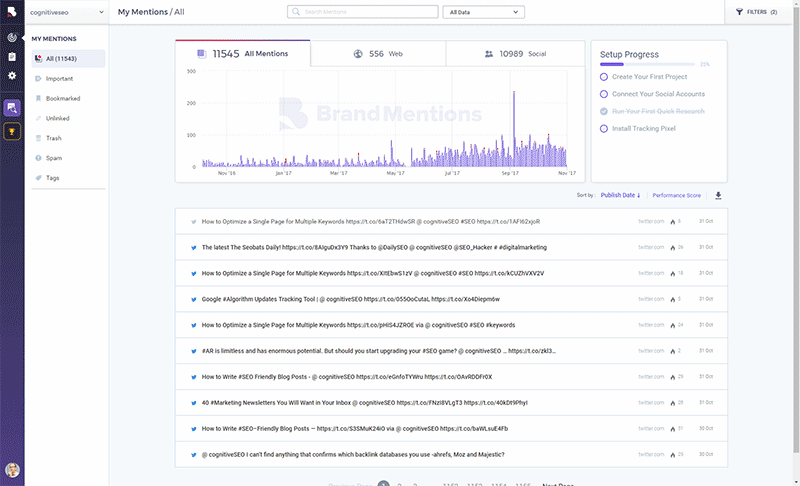
4. Evaluate the Sentiment Analysis for Your Mentions
Do people associate your brand with a positive feeling or a negative one?
As mentioned before, sentiment analysis will indicate what other people think about your brand when they recall it. On top of that, it allows you to manage your brand reputation and win potential customers.
Take for example the screenshot below. We performed sentiment analysis for Game of Thrones to see the evolution based on what people think and say about the story evolution during all six seasons. The result is obvious: a combination of positive or negative emotions based on what happened.
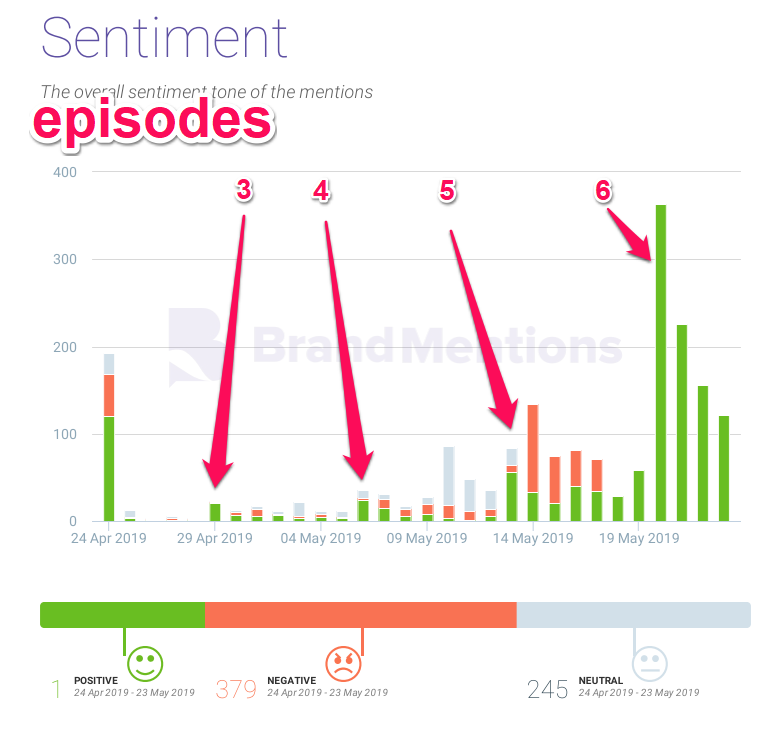
BrandMentions will show the sentiment analysis status for each mention and let you to easily visualize the context.
Sentiment Analysis is also one of the essential ways to perform social listening and measure your brand awareness.
5. Quantify the Total Number of Followers on Social Media
In online marketing, the total number of followers indicates the volume of fans that want to stay in touch with your brand and get engaged with the content. Getting an idea on how many people from your target audience understand the brand positioning and follow the information you share gives you some insights on how many people heard about it and tried your services or products. Knowing that will tell how effective your brand awareness campaigns were.
Tracking the number of your followers can be done through the analytics platform provided by each social media channel where you have an account. It is true that when it comes to social media, numbers and sizes aren't everything. We all know that 5k true fans are more valuable than 500k viewers that don't interact with the page and don't express any emotion or action.
6. Check Social Engagement
Besides analyzing the total number of followers you have on Facebook, Twitter, Instagram, Linkedin and so on, another key metric for measuring brand awareness is social engagement. Engagement includes shares, likes, comments, etc.
Analyzing social engagement will help you determine which content is driving people to our website, and what type of content is more effective. Having all the facts will help you determine new ways to tailor content for each social media channel to increase engagement and boost your performance marketing strategies.
7. Determine Social Media Reach
Social media reach shows you how many people have come across a particular content published on Facebook, Twitter or Instagram. You can measure social media reach for a social media post or a social media account.
Social media reach is different from your volume mentions and numbers or impressions; it determines the total number of users who actually got to view your content. Not all the followers and fans you have got to see your content, and social media reach does exactly that. Impressions, on the other hand, determines the count of how many times your content was displayed.

A better understanding of how many people reach and then engage with your content will help you take better business decisions and measure your brand awareness with higher precision.
You put an amount of effort into your PPC and Google Adwords campaigns and organic data that sometimes you forget evaluating and review brand awareness metrics. Or in some cases, you don't know how to measure them. This guideline will give you some directions and help you discover if you're missing out any traffic insights.

